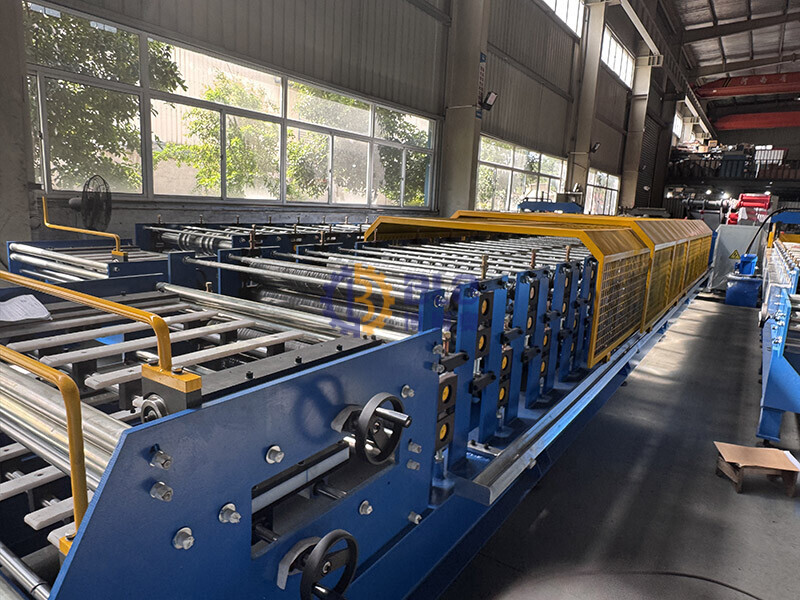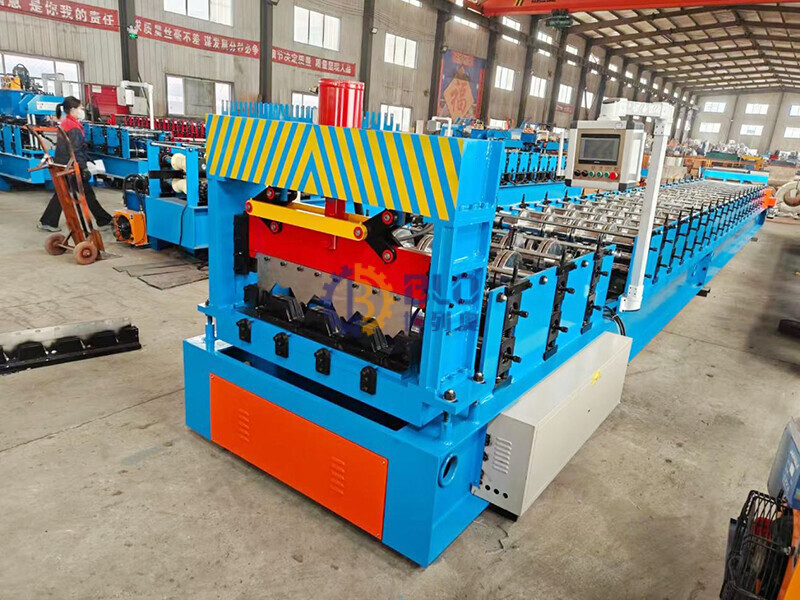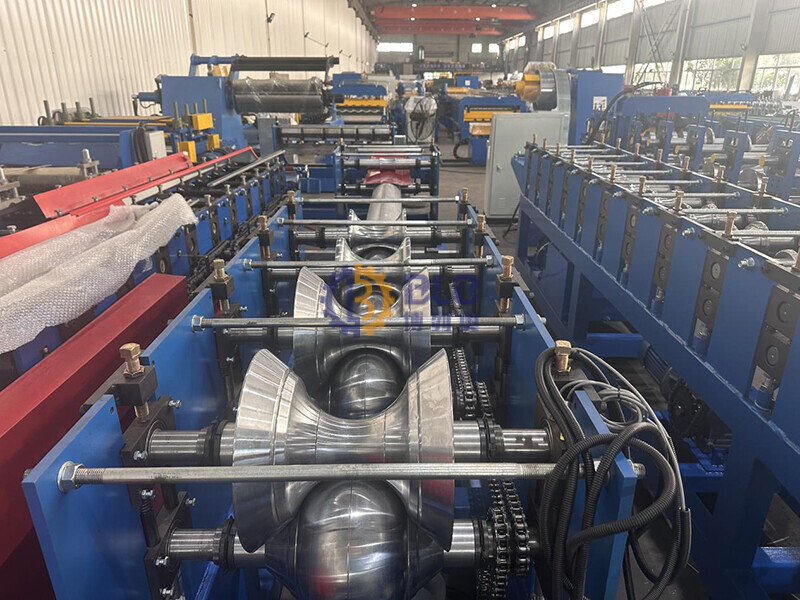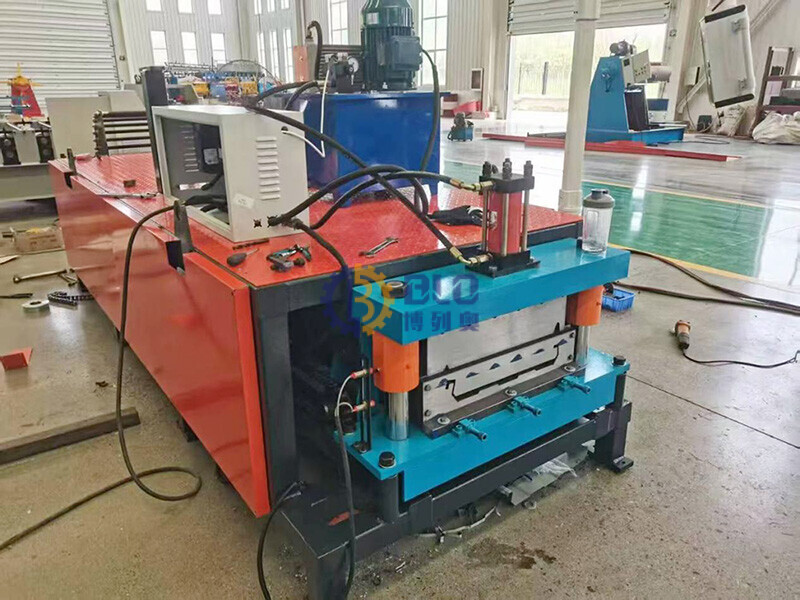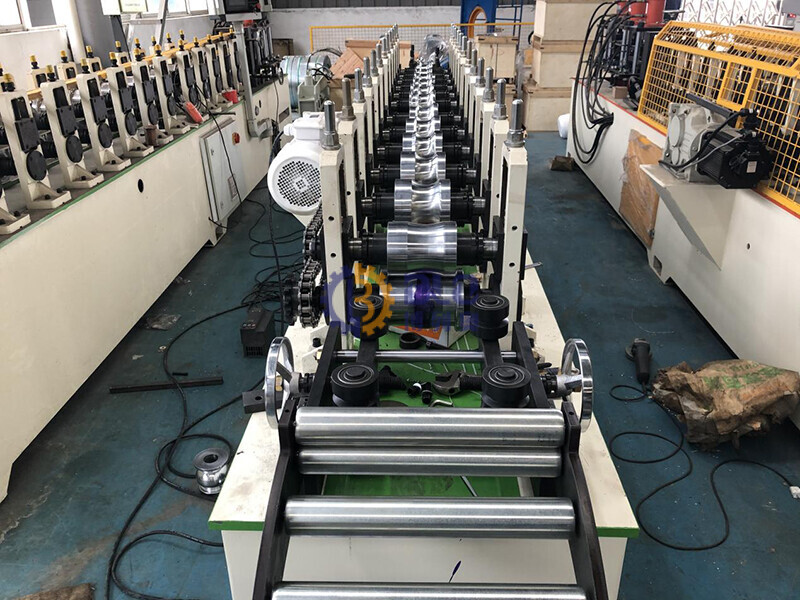A stud and track roll forming machine is a specialized cold-forming system used to produce metal studs and tracks for light gauge steel (LGS) framing in construction. These components form the structural framework for walls, ceilings, and partitions in residential, commercial, and industrial buildings.
Components of a Stud & Track Roll Forming Machine
1. Decoiler & Feeding System
Uncoils and straightens the metal coil (typically 0.5mm–2.0mm thickness)
Servo-controlled feeding for precise material advancement
2. Roll Forming Stations (12–24 stands)
Progressive forming rolls shape the flat strip into studs (C-profile) or tracks (U-profile)
Quick-change tooling allows switching between stud and track production
3. Punching & Notching Unit
Hydraulic or servo punching for screw holes, service holes, and alignment notches
Adjustable for different stud spacing (400mm, 600mm, etc.)
4. Cutting System
Flying cut-off saw or hydraulic shear for precise length cutting
PLC-controlled for variable lengths (e.g., 2.4m, 3.0m, 3.6m)
5. Output & Stacking System
Conveyor belt or automatic stacking for finished studs/tracks
Advantages of Using a Stud & Track Roll Forming Machine
High production efficiency – Faster than manual fabrication
Consistent quality – Uniform dimensions for easy assembly
Customizable – Adjustable for different steel grades and thicknesses
Cost-effective – Reduces labor and material waste
Automation-ready – Can integrate with robotic stacking systems
Applications in Construction
Drywall framing (residential & commercial buildings)
Suspended ceilings
Partition walls
Prefabricated steel structures
Container houses & modular building
Maintenance Requirements
Regular lubrication of rollers and bearings
Inspection of cutting blades & punches
Alignment checks to prevent profile distortion
PLC system updates for optimal performance
Latest Post
 What is floor deck roll forming machines?2025-09-19
What is floor deck roll forming machines?2025-09-19 Roof Ridge Tile Forming Machine2025-09-12
Roof Ridge Tile Forming Machine2025-09-12 Portable Jiaochi Tile Pressing Machine 820mm Effective Width2025-09-05
Portable Jiaochi Tile Pressing Machine 820mm Effective Width2025-09-05 Precision & Power: Unleash Efficiency with BLO's Cover Plate Roll Forming Machine2025-08-28
Precision & Power: Unleash Efficiency with BLO's Cover Plate Roll Forming Machine2025-08-28 The Ultimate Guide to Shutter Door Roll Forming Machine2025-08-22
The Ultimate Guide to Shutter Door Roll Forming Machine2025-08-22
Ask For A Quick Quote
If you are looking for more information on our services, or how we could potentially help, we would love to hear from you!

